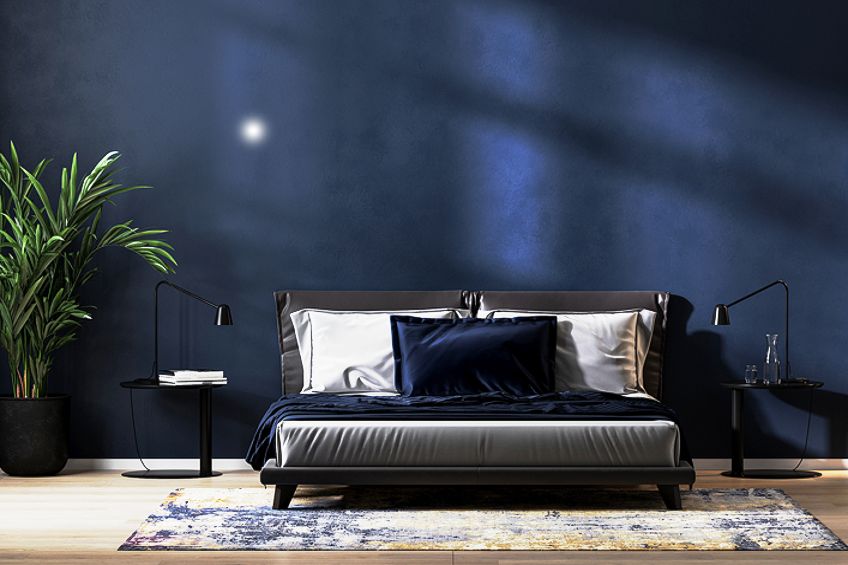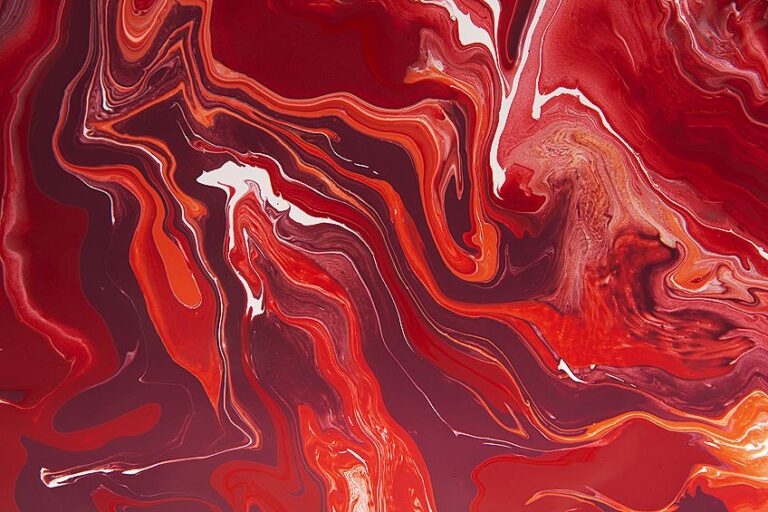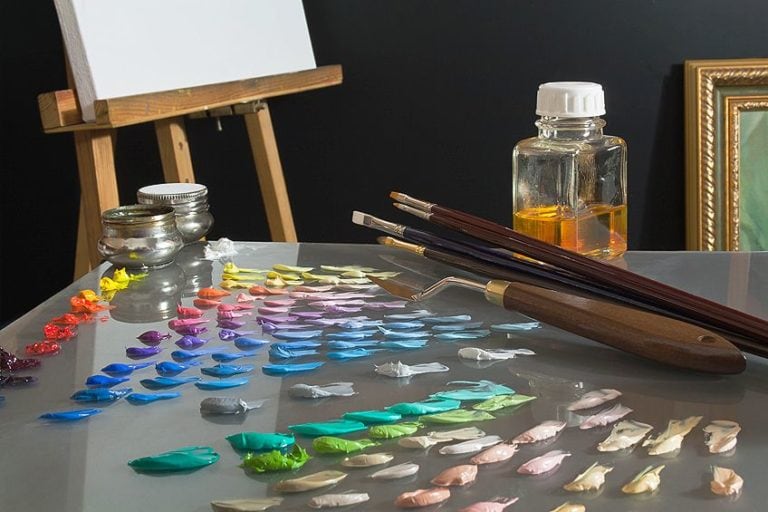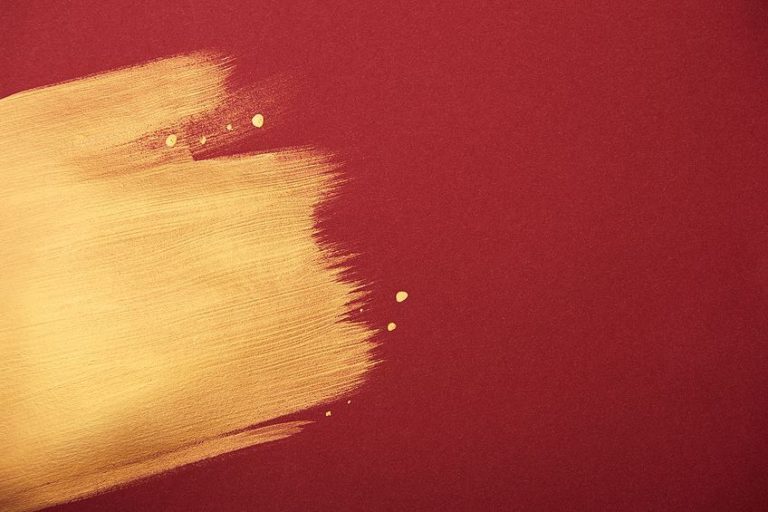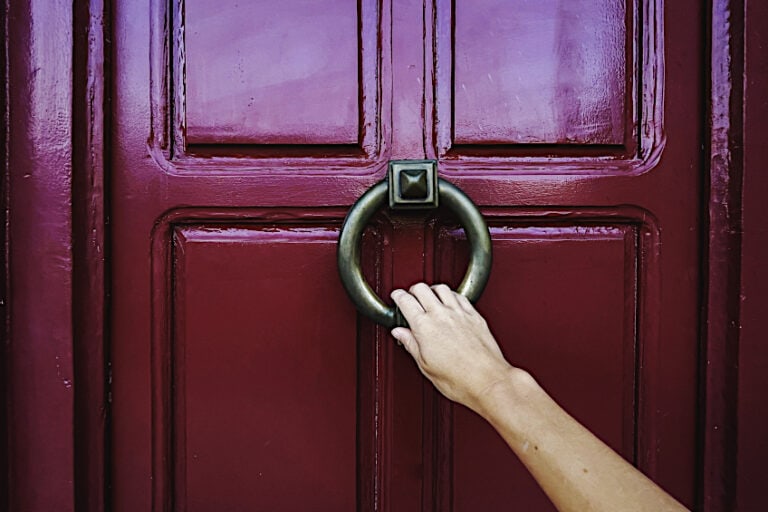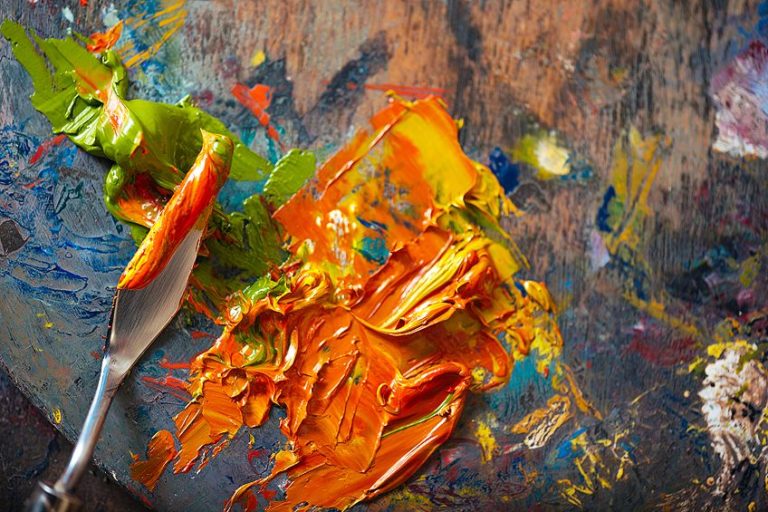Azure Blue Color – Experience a Kaleidoscope of Azure Blue Colors
This post may contain affiliate links. We may earn a small commission from purchases made through them, at no additional cost to you.
Azure blue, a mysterious hue that beckons curiosity, leaves us pondering, “What color is azure blue?” The enigmatic shades of azure blue, veiled in uncertainty, dance between ethereal cerulean and elusive teal, evoking a sense of intrigue and wonder. Exploring the spectrum of azure blue, we encounter a kaleidoscope of tones, each carrying its own story and emotion. With a code whispered in hexadecimal secrets, the azure blue color code hides its true essence, inviting us to unravel its captivating secrets. Prepare to embark on a journey where the azure blue color unveils its enigmatic allure, leaving us yearning for more!
Table of Contents
What Color Is Azure Blue?
Close your eyes and imagine the azure sky stretching infinitely above you. What color is azure blue? It is an enigma, a chromatic riddle that defies simple definition. Shades of azure blue cascade through a kaleidoscope of possibilities, each one a brushstroke of emotion. From the soft caress of baby blue down to the vivacious dance of a vibrant turquoise, azure blue captivates the soul with its ever-changing palette. But venture deeper into the recesses of this captivating hue, and you will discover the allure of dark azure blue.
It is the color of midnight whispers and hidden depths, a shade that embraces the mysteries of the unseen.
These dark azure blue shades are portals to the unknown, inviting you to explore its vast expanse, where secrets lie dormant. It embodies the duality of calm and intrigue, a paradoxical masterpiece painted on the canvas of imagination. So, when you wonder about this particular shade, prepare to embark on a journey of artistic discovery, where the boundaries of blue and the essence of color reveals its captivating secrets.

| Azure Blue Color | Azure Blue Hex Code | RGB | Azure Blue Color Code CMYK (%) | Shades of Azure Blue |
| Azure Blue | #007fff | 0, 127, 255 | 100, 50, 0, 0 | |
| Baby Blue | #bcd4e6 | 188, 212, 230 | 18, 8, 0, 10 | |
| Turquoise | #40e0d0 | 64, 224, 208 | 71, 0, 7, 12 | |
| Dark Azure Blue | #043a7e | 4, 58, 126 | 97, 54, 0, 51 | |
| Sapphire Blue | #0f52ba | 15, 82, 186 | 92, 56, 0, 27 | |
| Cornflower Blue | #6495ed | 100, 149, 237 | 58, 37, 0, 7 | |
| Ruddy Blue | #76abdf | 118, 171, 223 | 47, 23, 0, 13 | |
| Aquamarine Blue | #6bcae2 | 107, 202, 226 | 53, 11, 0, 11 | |
| Argentina Blue | #6cb4ee | 108, 180, 238 | 55, 24, 0, 7 | |
| Bayern Blue | #0066b2 | 0, 102, 178 | 100, 43, 0, 30 | |
| Berry Blue | #4f86f7 | 79, 134, 247 | 68, 46, 0, 3 |
Azure Blue Throughout Art History
Throughout the history of art, azure blue has remained an exquisite brushstroke that has most certainly left a mark on the canvas of human creativity. From ancient civilizations to modern masterpieces, this captivating hue has inspired and enchanted artists across the ages. In the sacred frescoes of the Byzantine era, azure blue adorned the robes of holy figures, symbolizing divinity and transcendence. Giotto di Bondone, the pioneer of Renaissance painting, employed azure blue in his iconic works, such as the Arena Chapel frescoes, infusing them with an otherworldly aura.
View of Delft (1661) by Johannes Vermeer
| Artist | Johannes Vermeer (1632 – 1675) |
| Date Completed | 1661 |
| Medium | Oil on canvas |
| Dimensions (cm) | 94 x 118 |
| Current Location | Mauritshuis, the Hague, Netherlands |
The opulent canvases of the Dutch Golden Age saw azure blue as a prominent feature, often depicting seas and skies in luminous glory. Artists like Johannes Vermeer embraced this hue, capturing the elusive quality of light in works such as View of Delft.
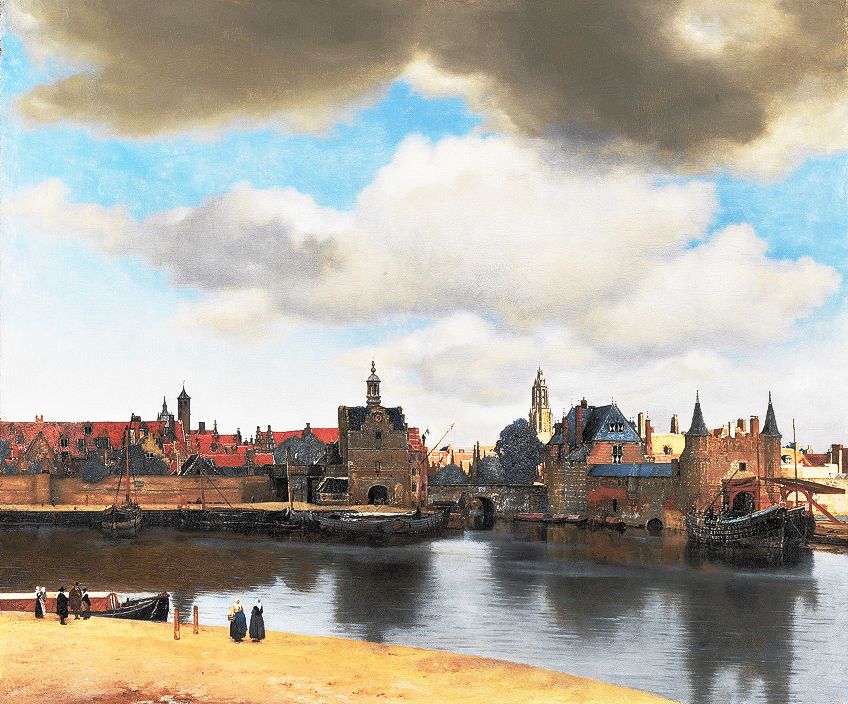 View of Delft (1661) by Johannes Vermeer; Johannes Vermeer, Public domain, via Wikimedia Commons
View of Delft (1661) by Johannes Vermeer; Johannes Vermeer, Public domain, via Wikimedia Commons
IKB 191 (1962) by Yves Klein
| Artist | Yves Klein (1928 – 1962) |
| Date Completed | 1962 |
| Medium | Dry pigment on canvas |
| Dimensions (cm) | 65.5 x 49 |
| Current Location | Private collection |
Moving forward in time, Yves Klein, a trailblazer of contemporary art, made azure blue his own. With his iconic piece “IKB 191”, Klein delved into the depths of azure, creating a monochromatic symphony that invited viewers to immerse themselves in its profound simplicity.
A Bigger Splash (1967) by David Hockney
| Artist | Yves Klein (1928 – 1962) |
| Date Completed | 1967 |
| Medium | Acrylic on canvas |
| Dimensions (m) | 2.43 x 2.44 |
| Current Location | Tate Britain, London, United Kingdom |
Fast-forward to the vibrant pop art movement, where David Hockney’s “A Bigger Splash” burst forth with azure blue, capturing the essence of California pools and sunny days in its playful brilliance. Throughout art history, azure blue has served as a conduit for artistic expression, representing both tranquility and boundless possibilities. It has graced the works of masters, conveying emotions, narratives, and the very essence of the human experience.
Its journey continues, inspiring artists to paint their dreams and evoke emotions with this mesmerizing color that transcends time and space.
What Colors Go Well With Azure Blue?
With its tranquil and captivating hue, azure blue is a color that harmonizes effortlessly with a multitude of shades, allowing for endless artistic combinations and visual symphonies. When exploring the realm of colors that blend seamlessly with azure blue, one encounters a spectrum of possibilities.
Azure Blue Color vs. Pastels
For a serene and dreamlike composition, pairing azure blue with soft pastel shades creates a harmonious ambiance. Delicate blush pinks dance alongside azure blue, reminiscent of a gentle sunrise painting the sky. Whispering lilacs and mellow mint greens add a touch of whimsy, evoking a sense of tranquility and grace.

| Color Name | Color Hex Codes | RGB | CMYK Color Code (%) | Shades of Color |
| Azure Blue | #007fff | 0, 127, 255 | 100, 50, 0, 0 | |
| Blush Pink | #fe828c | 254, 130, 140 | 0, 49, 45, 0 | |
| Mint Green | #3eb489 | 152, 255, 152 | 40, 0, 40, 0 |
Azure Blue Color vs. Yellows and Oranges
On the other end of the spectrum, bold and vibrant hues create a dynamic contrast with azure blue. Golden yellows infuse a sense of warmth and radiance, while fiery oranges ignite the visual landscape with passion and energy. Deep emerald greens lend an earthy elegance, grounding the azure blue in a lush embrace.

| Color Name | Color Hex Codes | RGB | CMYK Color Code (%) | Shades of Color |
| Azure Blue | #007fff | 0, 127, 255 | 100, 50, 0, 0 | |
| Golden Yellow | #ffdf00 | 255, 223, 0 | 0, 13, 100, 0 | |
| Fiery Orange | #c25811 | 194, 88, 17 | 0, 55, 91, 24 |
Azure Blue Color vs. Warm Tones
In the realm of complementary colors, warm tones such as coral and terracotta offer a striking counterpoint to azure blue. The interplay between the coolness of azure blue and the earthy warmth of these hues creates a visually captivating balance, evoking a sense of depth and complexity. Ultimately, the colors that blend harmoniously with azure blue are as diverse as the imagination allows.
Whether through gentle pastels, vibrant contrasts, complementary tones, or nature-inspired palettes, azure blue serves as a versatile and captivating companion, inviting us to explore the vast realm of color possibilities and unleash our creativity upon the canvas of visual expression.
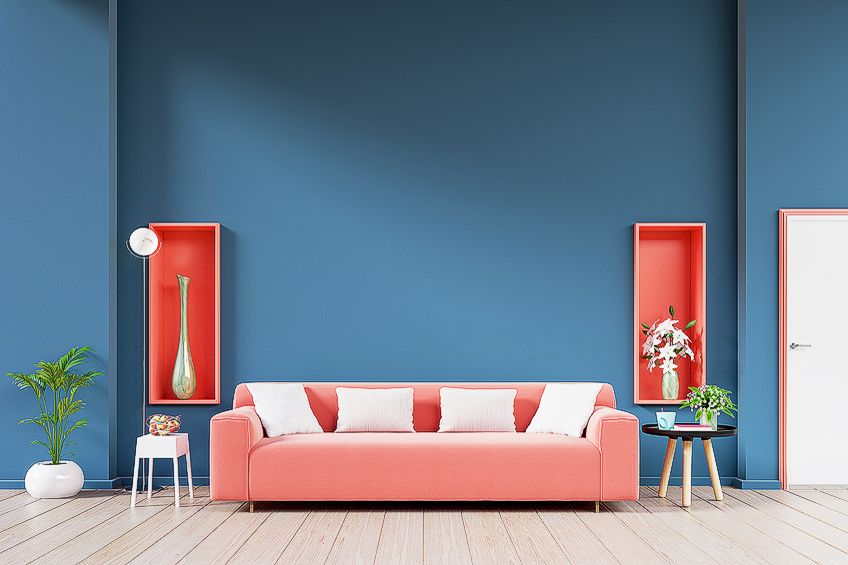
| Color Name | Color Hex Codes | RGB | CMYK Color Code (%) | Shades of Color |
| Azure Blue | #007fff | 0, 127, 255 | 100, 50, 0, 0 | |
| Coral | #ff7f50 | 255, 127, 80 | 0, 50, 69, 0 | |
| Terracotta | #e2725b | 226, 114, 91 | 0, 50, 60, 11 |
What Colors Make Azure Blue?
Are you ready to delve into the realm of artistic alchemy? Prepare to unlock the secrets of creating your own azure blue paint using a touch of ingenuity and a splash of creativity. Venture into your painter’s workshop armed with a palette of colors, ready to embark on a transformative journey. However, before we set sail, let us first gather the necessary paints! Begin with a vibrant cobalt blue, a hue that exudes richness and depth. Squeeze a generous dollop onto your palette, knowing that this will serve as the foundation for your creation. But wait, we’re not done yet – our azure blue must possess a mesmerizing luminosity. Reach for a pure titanium white paint, a hue reminiscent of cloud-kissed skies. Carefully introduce this ethereal pigment into your cobalt blue, gently blending the two until they harmonize, creating a celestial base.
Now, it is time to add a touch of enchantment. Enter the mysterious shade of viridian green. With calculated precision, drop by drop, infuse your cobalt blue and titanium white mixture with this verdant elixir.
Watch as the magic unfolds before your eyes, the green dances with the blue, transforming the concoction into a radiant shade of azure blue. But remember, the true artistry lies in embracing experimentation. Adjust the proportions of each pigment to suit your artistic vision. Add more cobalt blue for a deeper azure or increase the viridian green to intensify its vibrancy. The power lies in your hands. As your azure blue concoction takes shape, imagine the possibilities that lie ahead. Picture azure skies cascading over serene seascapes or envision azure blooms in a whimsical garden. With your own handmade azure blue paint, you hold the key to a world of boundless creativity.
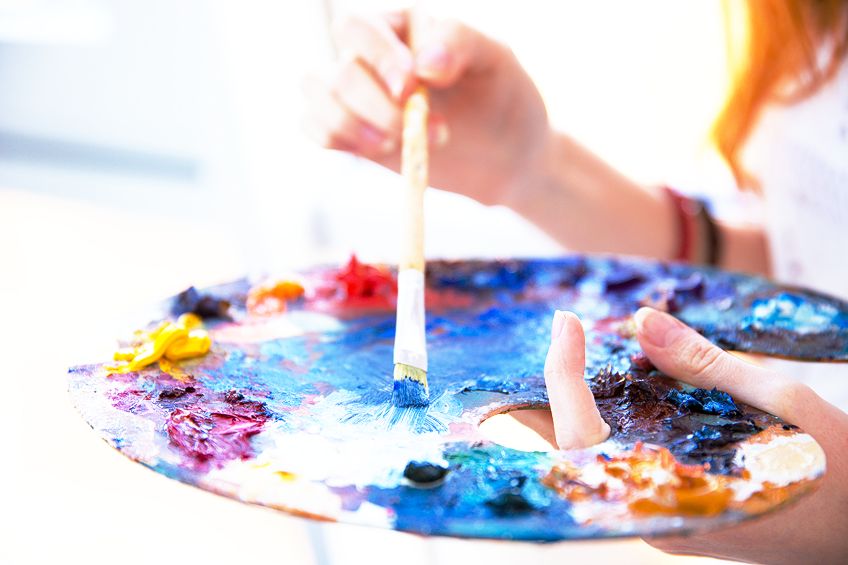
| Color Name | Color Hex Codes | RGB | CMYK Color Code (%) | Shades of Color |
| Cobalt Blue | #0047ab | 0, 71, 171 | 100, 58, 0, 33 | |
| Titanium White | #f3f4f7 | 243, 244, 247 | 2, 1, 0, 3 | |
| Viridian Green | #40826d | 64, 130, 109 | 51, 0, 16, 49 |
So, fellow artist, seize your brushes and immerse yourself in the alchemical process of creating azure blue. Embrace the thrill of experimentation and let your imagination soar. The journey awaits, and the canvas beckons you to bring forth your own masterpiece, infused with the luminous charm of your very own azure blue creation.
Frequently Asked Questions
How Does Azure Blue Evoke Emotions or Moods?
Azure blue is often associated with feelings of calmness, serenity, and expansiveness. It can evoke a sense of tranquility, reminding us of open skies and peaceful waters. The shade of azure blue used, as well as the context in which it is presented, can influence the specific emotions and moods it conveys.
What Is the Azure Color Code?
The azure color code is commonly represented as #007fff in hexadecimal notation. This code is used in various design and digital applications to ensure accurate color reproduction.
What Are Some Famous Artworks That Feature Azure Blue?
Azure blue has been featured in numerous artworks throughout history. For example, Giotto di Bondone incorporated azure blue in the frescoes of the Arena Chapel in Italy. Johannes Vermeer employed azure blue in his masterpiece, View of Delft. Additionally, Yves Klein explored the hue in his monochromatic work, IKB 191, and David Hockney depicted azure blue in his iconic painting, A Bigger Splash.
Larissa Meyer is a 32-year-old mother from Michigan and creative spirit since childhood. Her passion for painting and drawing has led her to an education as an illustrator and a career as a freelance graphic designer. She has a Bachelor of Fine Arts in Illustration and a degree in Graphic Design. Larissa is a talented artist who is able to master a wide range of styles and techniques to bring her artistic vision to life. Her greatest passion is currently fluid painting and epoxy resin art. Larissa’s love for art and her knowledge and experience in illustration make her the perfect Creative Director for our fluid-painting.com team. She is the creative head of our team and shares her passion and knowledge with our community through articles and tutorials.
As a mother of a 2-year-old daughter, Larissa also understands the importance of fostering creativity in early childhood. She uses her experience and knowledge to help other parents inspire their children and develop their artistic skills as well.
Learn more about Larissa Meyer and about us.

